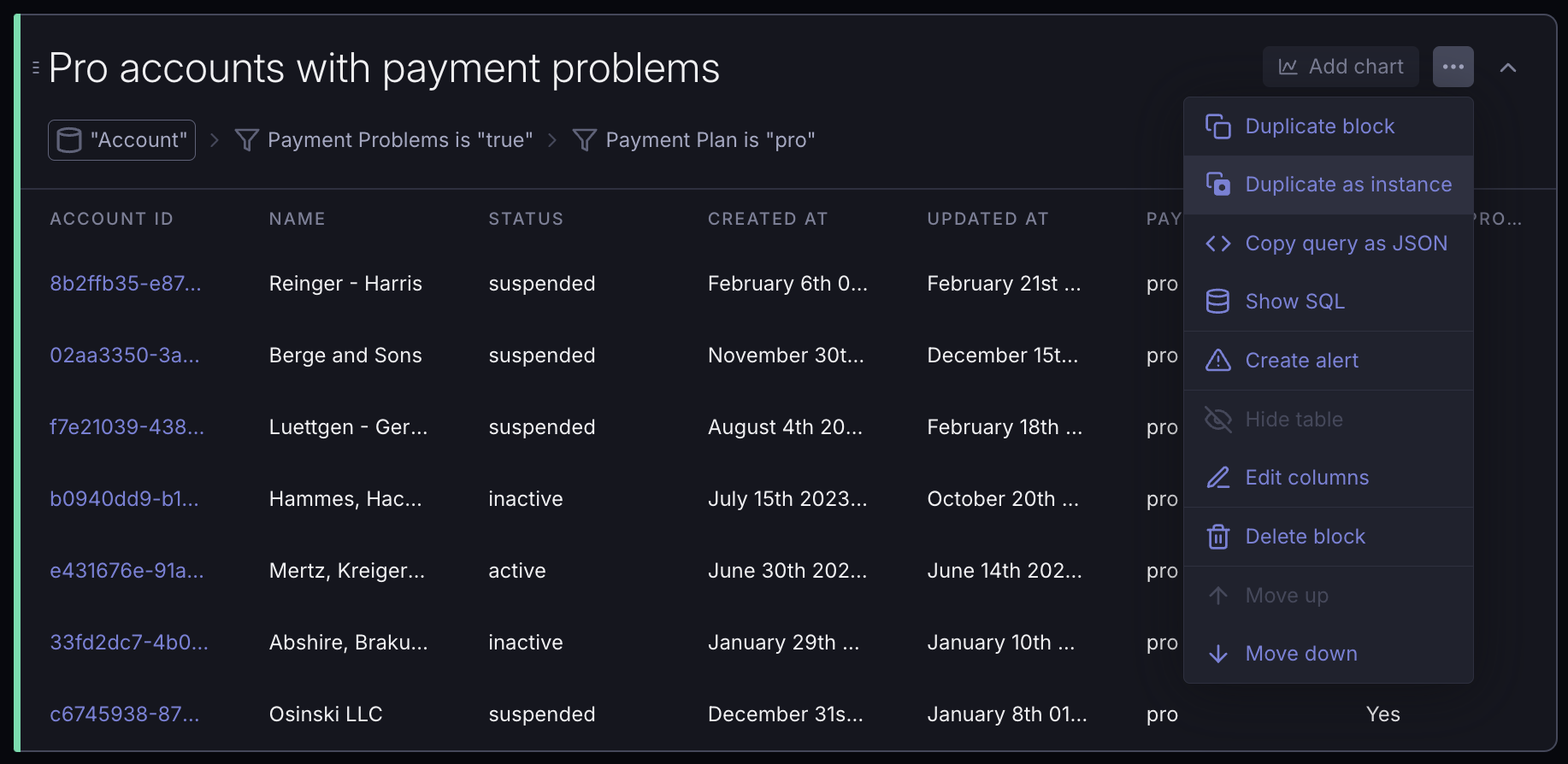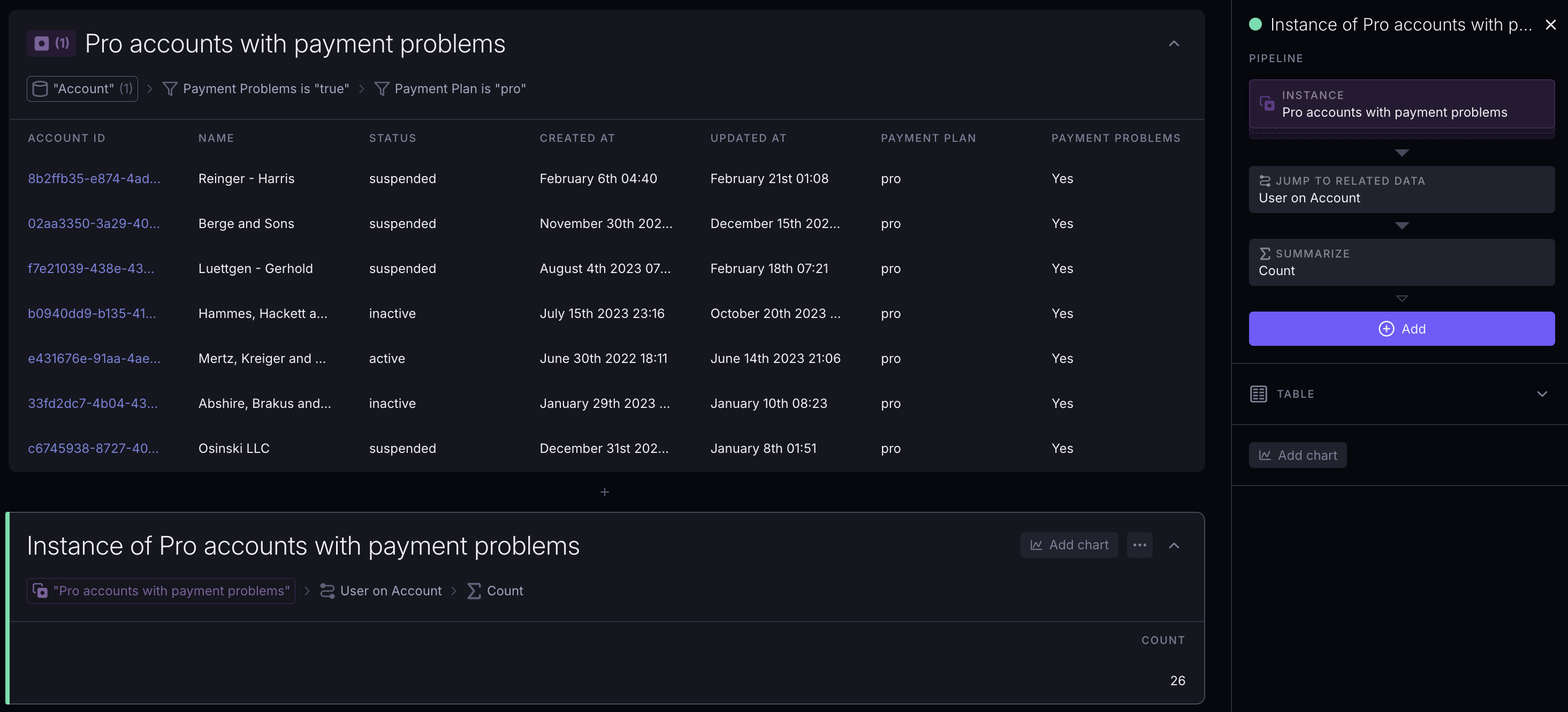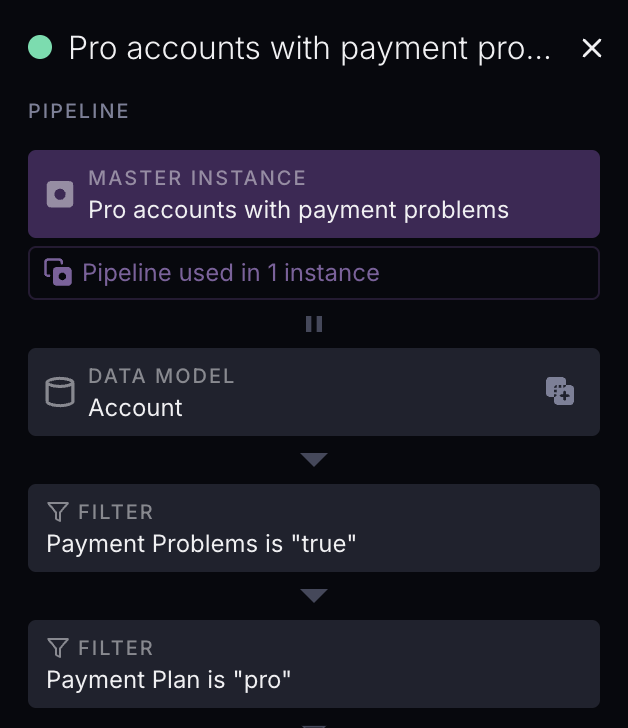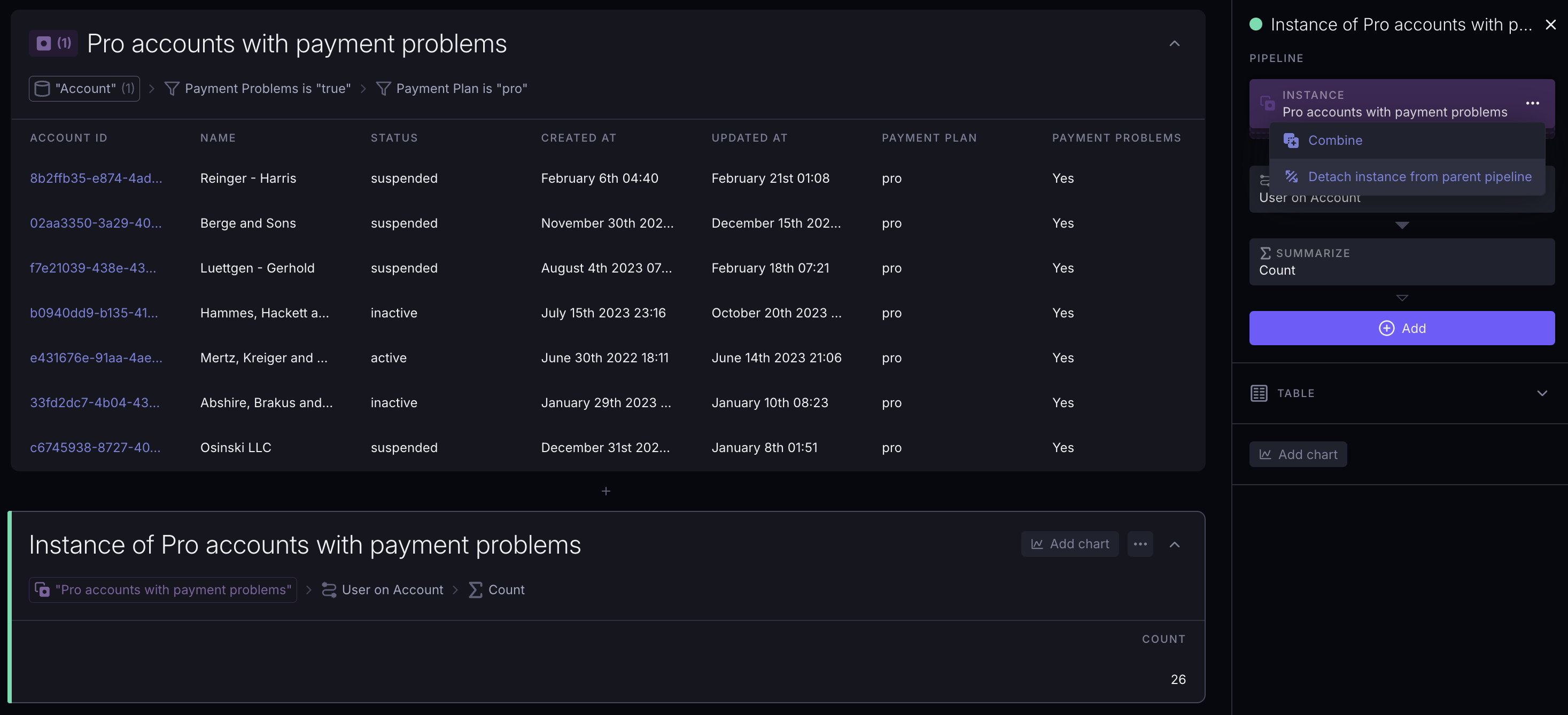Appearance
📑 Understanding instances
Exploration block instances are a powerful tool for reusing logic in your exploration.
Creating Instance blocks

When you duplicate a block as instance, we create a new block that's linked to the original one. The original block's steps will be visible in the sidebar, collapsed into a stack.
Here, we added a Jump to related data and Summarize steps to the instance block. We now see the number of Users that are in the Accounts from the first block.
Now that the two blocks are linked together through instances, any changes made to the master block will be carried over to the instances, too. This is the main power of instances!

Any filters or other steps added to the original "master" block get carried over. For example, further filtering down the Accounts will result in a changed (narrowed down) User list:

Master blocks can always be identified by their icon on the block itself or in the sidebar, alongside information about where they are used:

Detaching instances
If you wish to decouple the master and instance blocks, you can do so from the instance's sidebar:

"On this page" references
Any time you reference an "on this page" block (such as in Funnel or Retention blocks), these also get linked together using Instances.
Here, the Retention block references the block from the above, turning the above block into the master.

